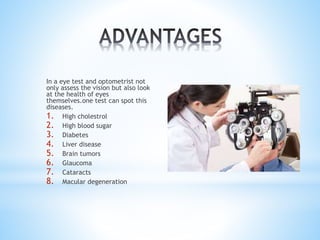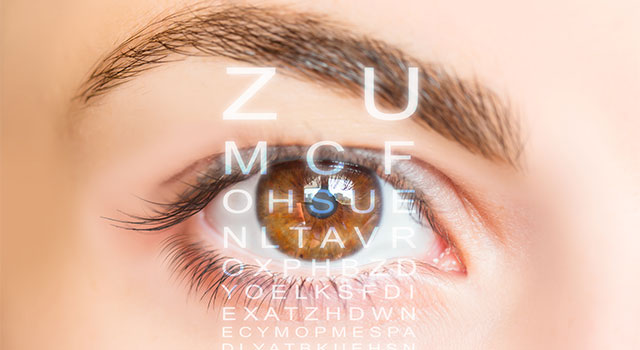Neighborhood Glaucoma Service Near Me: Trusted Experts for Eye Health And Wellness
Wiki Article
The Duty of Advanced Diagnostic Devices in Identifying Eye Disorders
In the world of ophthalmology, the use of advanced diagnostic devices has actually reinvented the very early recognition and monitoring of different eye conditions. From discovering refined changes in the optic nerve to keeping track of the progression of retinal diseases, these technologies play a critical function in boosting the precision and efficiency of diagnosing ocular problems. As the demand for exact and prompt diagnoses remains to expand, the combination of advanced tools like optical coherence tomography and aesthetic area testing has come to be crucial in the realm of eye treatment. The detailed interaction in between innovation and sensory practices not just drops light on detailed pathologies however additionally opens up doors to customized treatment methods.Significance of Early Medical Diagnosis
Early diagnosis plays an essential function in the reliable management and treatment of eye conditions. Prompt identification of eye problems is critical as it permits for punctual intervention, potentially avoiding more progression of the disease and minimizing lasting difficulties. By finding eye conditions at a beginning, doctor can supply ideal therapy strategies customized to the particular problem, inevitably resulting in better end results for patients. In addition, early medical diagnosis enables clients to accessibility required support services and sources quicker, boosting their general lifestyle.
Technology for Detecting Glaucoma
Sophisticated diagnostic technologies play a critical role in the early discovery and monitoring of glaucoma, a leading root cause of permanent blindness worldwide. One such innovation is optical coherence tomography (OCT), which gives thorough cross-sectional pictures of the retina, allowing for the dimension of retinal nerve fiber layer density. This dimension is vital in evaluating damages triggered by glaucoma. An additional innovative device is aesthetic area testing, which maps the sensitivity of a client's visual area, assisting to find any type of areas of vision loss feature of glaucoma. In addition, tonometry is made use of to determine intraocular pressure, a major risk aspect for glaucoma. This examination is important as elevated intraocular pressure can cause optic nerve damages. More recent technologies like the use of synthetic knowledge algorithms in evaluating imaging data are revealing appealing results in the early detection of glaucoma. These innovative analysis devices make it possible for eye doctors to diagnose glaucoma in its beginning, permitting timely treatment and much better administration of the condition to stop vision loss.Role of Optical Coherence Tomography

OCT's capability to measure retinal nerve fiber layer density you could look here permits for specific and unbiased measurements, helping in the early detection of glaucoma also before aesthetic field problems emerge. Furthermore, OCT technology allows longitudinal why not check here surveillance of architectural modifications in time, helping with customized treatment plans and timely treatments to assist maintain people' vision. The non-invasive nature of OCT imaging also makes it a recommended choice for checking glaucoma progression, as it can be repeated frequently without causing pain to the person. Generally, OCT plays a crucial function in enhancing the analysis precision and management of glaucoma, eventually adding to far better end results for people at danger of vision loss.
Enhancing Diagnosis With Visual Area Testing
A necessary component in thorough ocular evaluations, visual area testing plays an essential role in boosting the analysis process for different eye problems. By examining the full degree of a client's visual area, this examination gives vital info regarding the useful integrity of the entire aesthetic path, from the retina to the aesthetic cortex.Visual area testing is specifically important in the medical diagnosis and monitoring of problems such as glaucoma, optic nerve disorders, and various neurological conditions that can influence vision. With measurable dimensions of outer and central vision, medical professionals can find refined changes that may indicate the visibility or development of these disorders, even prior to obvious symptoms occur.
In addition, aesthetic area screening enables the monitoring of treatment efficacy, assisting ophthalmologists tailor restorative interventions to private clients. eyecare near me. By tracking modifications in aesthetic field efficiency with time, health care carriers can make informed decisions about readjusting drugs, advising medical interventions, or carrying out other proper steps to preserve or boost a person's visual function
Taking Care Of Macular Deterioration

Final Thought
In verdict, progressed analysis devices play an essential function in recognizing eye disorders early on. Technologies such as Optical Coherence Tomography and aesthetic field testing have considerably improved the precision and effectiveness of diagnosing conditions like glaucoma and macular deterioration.Report this wiki page